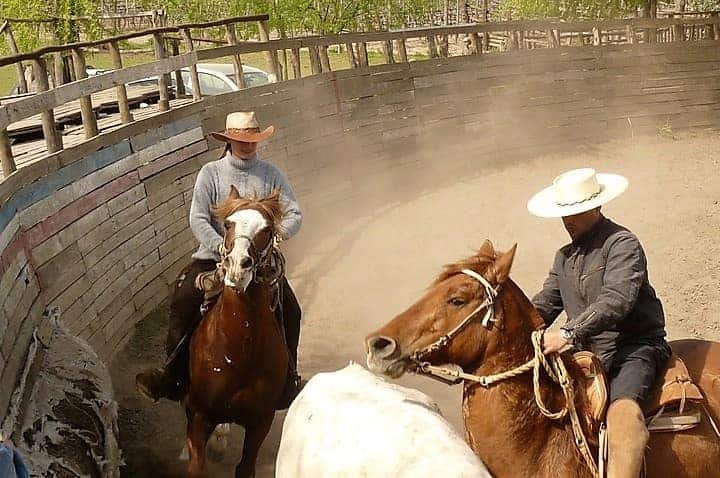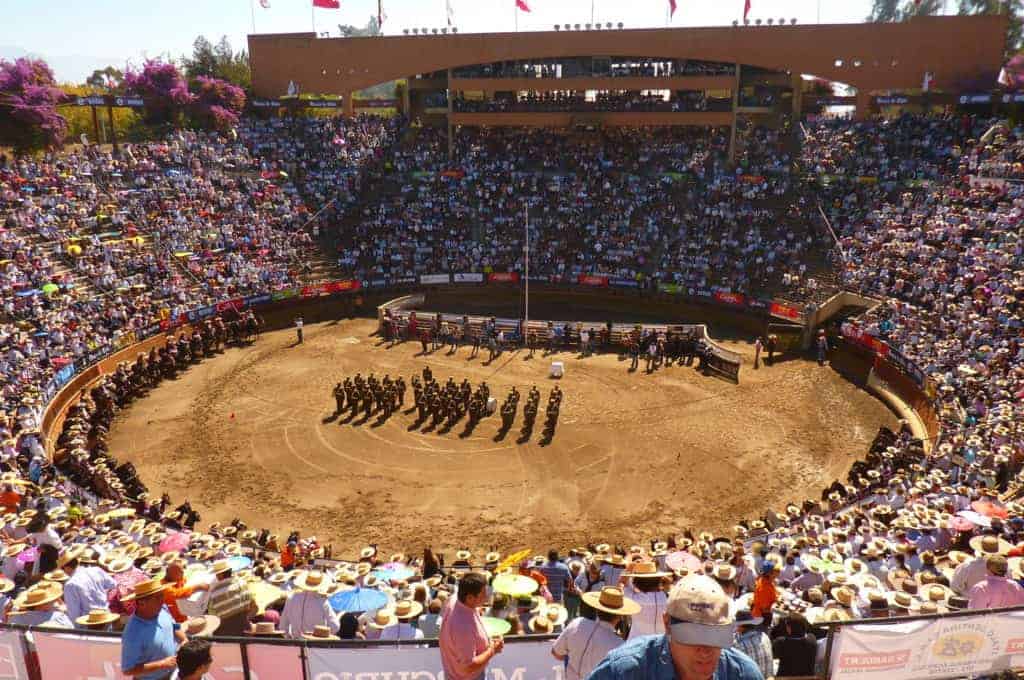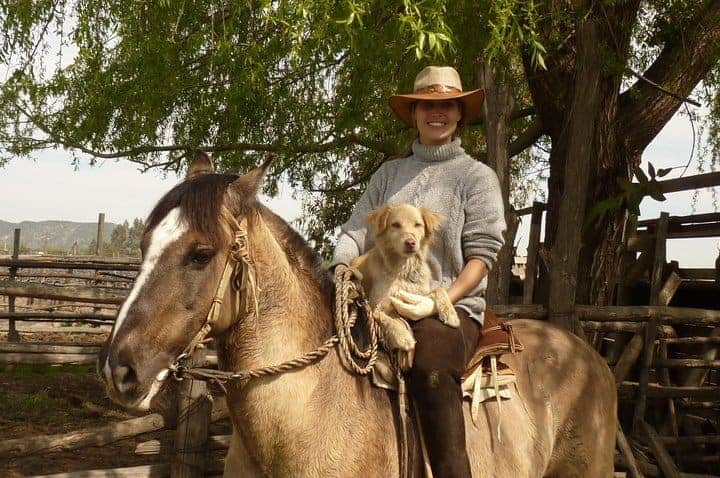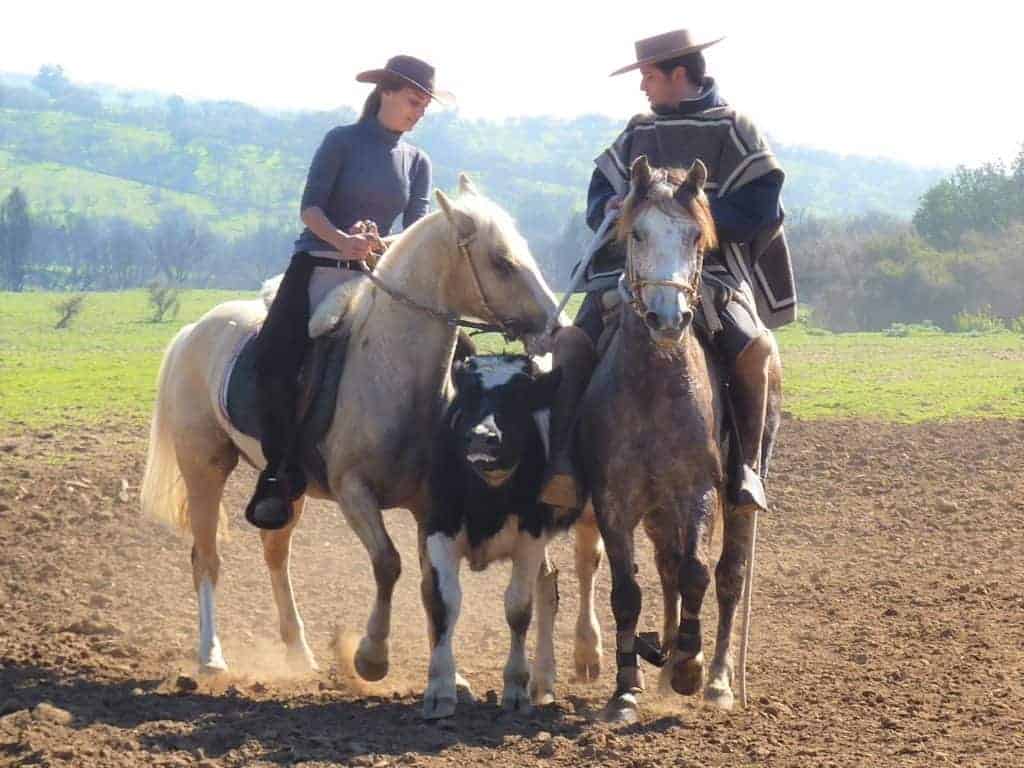Chilean Rodeo has a history reaching back over 400 years but was not recognized as a national sport until 1962 by the Chilean Olympic Committee (Comité Olímpico Chileno). Chilean rodeo’s history begins somewhere between the years of 1557 and 1561 when the first “huasos” (Chilean cowboys & horse riders) began going up into the Andes to herd the season’s new calves back to the city to be branded and sorted.
The first ever Chilean rodeos were held in the Plaza de Armas of Santiago. These early rodeos would often last for days and would place a great amount of strain on the huasos that participated. To cope with the stress and fatigue the rodeos caused them, the huasos turned the rodeo into a game assigning points for the manner in which the calves were separated from the heard.
Rules and scoring

Two riders enter into a ring with a diameter of 20-25 meters after a young calf. Within that ring is a smaller padded arena of about 12m where the riders attempt their “atajadas” (literally translated, this word means “attacks,” but in this context, the meaning is closer to “attempts”). Riding their specially trained horses, the huasos attempt to pin the calf between the padded walls of the inner ring with their horses’ chests. Every “collera” (the pair of riders) get three “atajadas” (or attempts) to pin the calf with the objective of scoring as many points as possible.

Rodeos last for two days, with Saturdays typically being for collera classification and Sundays when the finals are held. Rodeo season in Chile begins in the month of September (the month of the independence of Chile) and ends in April with the National Rodeo Championship Finals (la Final del Campeonato Nacional de Rodeo) which is held in the Monumental Stadium of Rancagua (Medialuna Monumental de Rancagua). This is the largest equestrian events venue in the world with a seating capacity of 20,000 people.
Training

For a Chilean Criollo Horse to enter its first rodeo, it must train for a period of approximately five years. The process of training the horse must be done with the utmost care and patience because even the smallest of mistakes could en the athletic career of the horse.
First, you start with a newly broken horse by working with the mouth trying to get the new horse to bend his neck to the left or right while simply walking forward. Next, this process must be repeated at a trot while also training the horse to become accustomed to spurs. Spurs help the horse achieve proper posture by keeping in his back legs and moving sideways, first at a walk, then a trot, then a gallop. This posture is desirable because of the small spaces riders have to work within rodeo arenas.
Once the desired posture is achieved, then begins the process of trying to accustom the horse to chasing the young bull. For this stage of the training process, a tame young calf (called a topero) is always used so that the horse has no fear of the young bulls.

Then huasos try to get the horse used to move laterally to pin the young bull with its chest, first at a walk and then eventually at a gallop (this process is called topeo).
The last phase of training is also the most difficult. This is the phase in which the horse must be trained to pin a fully-grown bull. This is when a horse must be brought into the rodeo arena (medialuna) for the first time. First, a young calf is let loose into the medialuna and the horse has to be encouraged to chase and eventually pin the calf within the smaller, padded inner-arena. The constant and rapid repetition of the chase and atajada make these actions natural to the horse and rider. But also because of the constant repetition and strain on the part of the horse, there must be long periods of rest between training sessions, or the horse could become injured. These long periods of rest lengthen the athletic career of the horse and help ensure a longer and healthier life.
Special thanks to Eduardo Macchino for researching and writing this article.
Check out our 5 Best places to go Horseback Riding in Chile!
And if you fancy a ride, check out our Morning Horseback Riding Tour and our Sunset Horseback Riding Tour.
